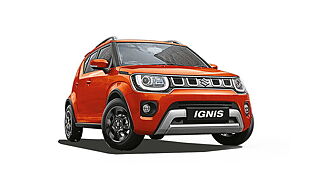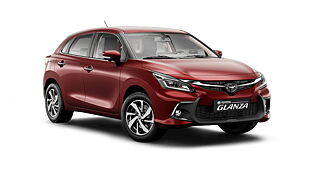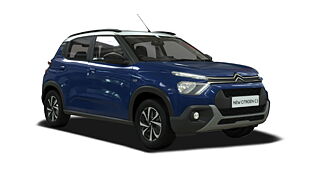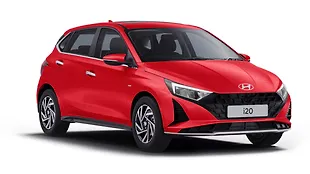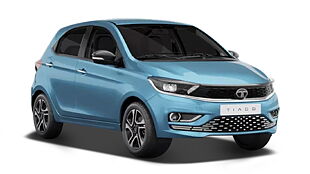Maruti Ignis [2017-2019] Alpha 1.2 MT
- Ignis [2017-2019]
- 360° View
- Specs & Features
- Variants
- Colours
- User Reviews
Variant
Maruti Ignis [2017-2019] Alpha 1.2 MT Review
A crossover-styled hatch in the B2 segment was one of the few cars that Maruti Suzuki’s stable had not catered to yet. The launch of the Ignis at the start of 2017 changed that. It has a fresh and funky appearance with butch SUV looks, which Indians are swearing by these days. The car is available with multiple customisation options, both in and out. Maruti has powered the car with their tried-n-tested 1.2-litre petrol and 1.3-litre diesel engine options. And what's new is that both these models get the brand's AGS gearbox (AMT). Maruti Suzuki has surely set the pace in this segment, especially with such a wide range on offer. But all this comes a premium price, which we will come to later. For now, let's see if the Ignis has the potential to lure a buyer.
Introduction
Design and Style
Interior
Safety and Equipment
Engine, Performance and Braking
Ride and handling
Price and fuel economy
Specifications
Test Data
Specifications & Features
- Specifications
- Features
- Specifications
- Features
Specifications
Engine & Transmission
Engine1197 cc, 4 Cylinders Inline, 4 Valves/Cylinder, DOHCFuel TypePetrolMax Power (bhp@rpm)82 bhp @ 6000 rpmMax Torque (Nm@rpm)113 Nm @ 4200 rpmMileage (ARAI)20.89 kmplDrivetrainFWDTransmissionManual - 5 GearsValve/Cylinder (Configuration)4, DOHCDimensions & Weight
Length3700 mmWidth1690 mmHeight1595 mmWheelbase2435 mmGround Clearance180 mmKerb Weight860 kgCapacity
Suspensions, Brakes, Steering & Tyres
Features
Exterior
Braking & Traction
Safety
Comfort & Convenience
Lighting
Locks & Security
Doors, Windows, Mirrors & Wipers
Entertainment, Information & Communication
Mobile App Features
Storage
Airbags
Seats & Upholstery
Instrumentation
Manufacturer Warranty
Other Ignis [2017-2019] Variants
| Variants | Price | Specifications | |
|---|---|---|---|
Rs. 6.59 Lakh | 5 Person, FWD, 113 Nm, 180 mm, 860 kg, 260 litres, 5 Gears, No, 32 litres, No, Front & Rear, 3700 mm, 1690 mm, 1595 mm, 2435 mm, 113 Nm @ 4200 rpm, 82 bhp @ 6000 rpm, Keyless, Yes (Automatic Climate Control), Front & Rear, 1, Reverse Camera, No, No, No, Yes, 0, 5 Doors, 20.89 kmpl, Petrol, Manual, 82 bhp | Get Offers from Dealers |
Similar Cars
Explore Used Maruti Ignis
Colors
Reviews
- (9 Ratings) 9 Reviews
4.0/5
- Premium customer will definitely attracts!I am planning buy a new car, and Auto portal did arrangement about the test drive an executive came along with the ignis I drove around 20 mints and test the car in all parameters that I already set in my mind, awesome pick up, spacious cabin, silent engine decent combination with dual tone interior and exterior, keyless entry, stat stop feature it's a small package with amazing surprises !Rating parameters(out of 5)4
Exterior
4Comfort
4Performance
4Fuel Economy
4Value For Money
About the ReviewerPurchase Not PurchasedDriven forDid a short drive onceWas this review helpful?00 - Funky carVery funky and extra car designed by suzuki . Car has very funky exterior looks with projector lamps and interior too of dual tone seems very good . Features are very much loaded but car has less space to make 5 people sit But by driving the car is much comfortable . But for small family car is much better and is easy to drive in crowdsRating parameters(out of 5)4
Exterior
4Comfort
3Performance
4Fuel Economy
4Value For Money
About the ReviewerPurchase Not PurchasedDriven forDid a short drive onceWas this review helpful?01 - Ok-ish car !!Maruti Suzuki Ignis launched a few time ago which is today one of the most known affordable hatchback. My cousin purchased this car a few months ago from nexa. The car does not have a really nice boot space as well as trunk space is also less , making it horrible for long hill station trips. In the matter of looks , to be honest , it does not Looks like a beautiful car but just like an ordinary hatchback. But The performance of the car is great. It’s very smooth and the pickup of the car is just phenomenal. Well I would really prefer Maruti Suzuki baleno ( zeta or delta model ) over this car. Well these are the all pros and cons I came to knew from this car. Thank you !Rating parameters(out of 5)3
Exterior
3Comfort
5Performance
5Fuel Economy
3Value For Money
About the ReviewerPurchase Not PurchasedDriven forFew hundred kilometersWas this review helpful?00
- Home
- Maruti Suzuki Cars
- Ignis [2017-2019]
- Alpha 1.2 MT




![Maruti Suzuki Ignis [2017-2019] Alpha 1.2 MT Maruti Suzuki Ignis [2017-2019] Alpha 1.2 MT](https://imgd.aeplcdn.com/664x374/cw/ec/21716/Maruti-Suzuki-Ignis-Right-Front-Three-Quarter-87860.jpg?wm=0&q=80)
![Maruti Suzuki Ignis [2017-2019] Right Front Three Quarter Maruti Suzuki Ignis [2017-2019] Right Front Three Quarter](https://imgd.aeplcdn.com/664x374/cw/ec/21716/Maruti-Suzuki-Ignis-Right-Front-Three-Quarter-87915.jpg?v=201711021421&q=80)
![Maruti Suzuki Ignis [2017-2019] Rear View Maruti Suzuki Ignis [2017-2019] Rear View](https://imgd.aeplcdn.com/664x374/cw/ec/21716/Maruti-Suzuki-Ignis-Rear-view-65127.jpg?v=201711021421&q=80)
![Maruti Suzuki Ignis [2017-2019] Rear View Maruti Suzuki Ignis [2017-2019] Rear View](https://imgd.aeplcdn.com/664x374/cw/ec/21716/Maruti-Suzuki-Ignis-Rear-view-88233.jpg?v=201711021421&q=80)
![Maruti Suzuki Ignis [2017-2019] Rear View Maruti Suzuki Ignis [2017-2019] Rear View](https://imgd.aeplcdn.com/664x374/cw/ec/21716/Maruti-Suzuki-Ignis-Rear-view-135025.jpg?wm=1&q=80)
![Maruti Suzuki Ignis [2017-2019] Left Rear Three Quarter Maruti Suzuki Ignis [2017-2019] Left Rear Three Quarter](https://imgd.aeplcdn.com/664x374/cw/ec/21716/Maruti-Suzuki-Ignis-left-rear-three-quarter-88237.jpg?v=201711021421&q=80)
![Maruti Suzuki Ignis [2017-2019] Left Side View Maruti Suzuki Ignis [2017-2019] Left Side View](https://imgd.aeplcdn.com/664x374/cw/ec/21716/Maruti-Suzuki-Ignis-Left-Side-View-87918.jpg?v=201711021421&q=80)

